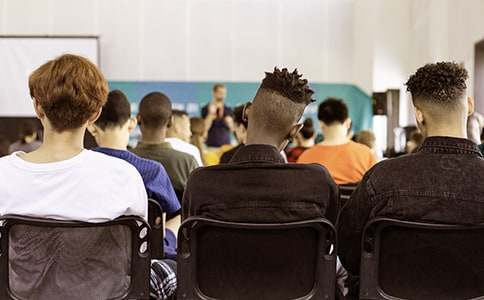新托福閱讀推理題的解決方法
推斷題就是所需要的信息都包含在文章中,但是沒(méi)有直接加以說(shuō)明,需要考生從已知中推出。推理題的題干中常出現(xiàn)infer, imply , most likely (least likely) 或probably 等詞語(yǔ)。根據(jù)OG, 在IBT 閱讀的3篇文章中,每篇會(huì)有0-2道這類(lèi)問(wèn)題,一次考試總共有3-4道推斷題。

一、推理題的兩大分類(lèi):有共性的推理題和無(wú)共性的推理題。
這里所謂的有共性推理題就是說(shuō)題干中有和原文內(nèi)容相同的關(guān)鍵詞(也叫線索)。根據(jù)關(guān)鍵詞回原文定位,然后進(jìn)行推理。一般來(lái)說(shuō),大多數(shù)的推理題都屬于這類(lèi)題目。對(duì)于無(wú)共性的推理題,也就是題干中無(wú)線索,一般使用排除法,即根據(jù)各個(gè)選項(xiàng)的關(guān)鍵詞回原文定位,通過(guò)排除法得出正確答案。返回原文找信息點(diǎn),采用排除法是解決這兩類(lèi)題型解決的共同策略。
二、推理題的三個(gè)具體的解題思路:
1、一般對(duì)比推理:根據(jù)兩個(gè)事情的對(duì)比特征,問(wèn)其中一個(gè)事物的特征,只要將與之形成對(duì)比的另外一個(gè)事情的特征否定掉就可以。
2、時(shí)間對(duì)比推理:在這種推理中,一般有兩個(gè)形成對(duì)比的時(shí)間段,它們所具有的特征一般相反。當(dāng)題干問(wèn)一個(gè)時(shí)間段的特征時(shí),只要將與之相反的時(shí)間段的特征否定掉就可以了。
3、集合概念推理 :一個(gè)大的`集合的兩個(gè)方面形成對(duì)比,兩者之間存在著互補(bǔ)性關(guān)系,也就是一個(gè)的增加意味著另一個(gè)的減少。反之,相同。這個(gè)比較抽象,我們來(lái)看一個(gè)例子:
例如:Both the number and the percentage of people in the United States involved in nonagricultural pursuits expanded rapidly during the half century following the civil war, with some of the most dramatic increases occurring in the domains of transportation, manufacturing, and trade and distribution.
What can be inferred from the passage about the agricultural sector of the economy after the Civil War?
(A) New technological developments had little effect on farmers.
(B) The percentage of the total population working in agriculture declined.
(C) Many farms destroyed in the war were rebuilt after the war.
(D) Farmers achieved new prosperity because of better rural transportation.
文中指出:非農(nóng)業(yè)人口的數(shù)量和比例都增加了。由此可知農(nóng)業(yè)人口的數(shù)量和比例下降,所以(B)為正確答案。
三、解答這類(lèi)題目需要注意的信息點(diǎn):
1.日期和數(shù)字。
2.關(guān)鍵詞: 表示多少的副詞: many , some, much of, several , a few ,most …;情態(tài)動(dòng)詞:may, can , could…;表示過(guò)去的:used to be , was, were , at one time, previously ;表示不是唯一的: not only ,not exclusively等。
總之,文中的關(guān)鍵詞,觀點(diǎn),邏輯和平時(shí)的基本常識(shí)是解決這類(lèi)問(wèn)題的關(guān)鍵。
【新托福閱讀推理題的解決方法】相關(guān)文章:
關(guān)于托福閱讀推理題的解題方法01-18
2017托福閱讀推理題解題攻略08-20
2017托福閱讀題型解析:推理題08-17
托福閱讀新素材01-10
關(guān)于新托福的閱讀資料01-09
新托福閱讀詞匯題01-22
新托福閱讀理解搞定的方法07-09
新托福閱讀詞匯記憶方法01-24
2018新托福閱讀核心詞匯01-23